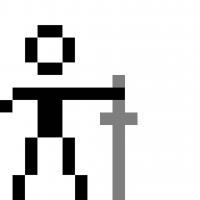Greetings,
I am a programmer, a wannabe indie game developer, and a fan of big screens. I just made the leap from 1920x1200 to 4k (actually, "UHD") at 3840x2160, and thought I would share my experience.
Note, I am a Windows user.
I was using five, 25" 1920x1200 displays, arranged with 3 on my desk and two above. When deep into programming, I can easily consume all of this space, depending upon what I'm working on. It isn't unusual to have 2-3 VMs, two versions Visual Studio, countless browsers, and other tools like Eclipse or IntelliJ open at once.
However, looking "up" to the top two monitors was a pain in the neck--really.
I have been watching UHD monitors since they released, and waiting for the price to drop into the troposphere, which they did just recently. I bought three Samsung U29D590D, 28" displays and got rid of the old monitors.
First impressions
Wow, stuff is SMALL! I went from 94 dpi to 157 dpi, and my eyes could really tell. I wondered if I was too old now to chase ever more tightly packed pixels.
Second impressions
With Windows Scaling to help adjust fonts and icons, these are very doable, with only a few minor gotcha's.
Final impressions
Utterly satisfied. All the tools I use make it easy to zoom in/out on my code, Windows scaling helps with toolbars and other screen elements, and I haven't yet found a bad spot.
However, whereas I assumed before purchase that three, quad-HD displays would give me about as much realestate as 12 HD displays, I would estimate the actual result to be something more like 9, because of scaling. This isn't bad, and rather than resulting in more eye strain it causes less, because everything is much clearer and crisper.
Thoughts about gaming and/or game dev
Games are slower, but that's because there are 4x as many pixels. The performance loss isn't always that bad, however, because many games are not fill-rate limited, but geometry limited.
Also, when it comes to game development, it is awesome to get full HD in a Window, and also to be able to run at the largest [industry standard] resolution so as to stress-test my game.
These monitors are 60hz when powered through DisplayPort. Given that I power them with two GPUs (R9 280x) to get the full 60hz on all 3 monitors, I cannot setup an Eyefinity display at that frequency. However, I can use a display port splitter (MSP) to power all 3 from one card, make the other card a CrossFire slave, and run my game at up to 11,520x2160, for the ultimate "Damn, my code is slow!" experience. (I did this once for fun, but let's face it: this is not a useful test-case as yet).
Summary
That's about it; I am happy with my upgrade.
I wrote somewhat more about it here:








